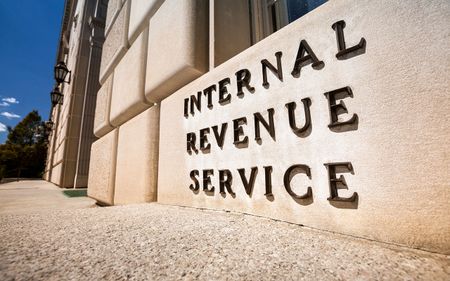5 Ways to Avoid Taxes on Social Security Benefits
You may need to pay income taxes on a portion of your Social Security benefits, based on your income.


You may need to pay income taxes on a portion of your Social Security benefits, based on your income. But knowing the rules and a few key strategies can help you minimize the tax hit.
Whether or not your Social Security benefits are taxable depends on your “provisional income.” This number is calculated by taking your adjusted gross income (AGI), not counting Social Security benefits, and adding in nontaxable interest and half of your Social Security benefits. If your provisional income is below $25,000 and you file taxes as single or head of household, or less than $32,000 if you file a joint return, you won’t owe taxes on your benefits. If your provisional income is between $25,000 and $34,000 and you’re single, or between $32,000 and $44,000 and you file jointly, up to 50% of your benefits may be taxable. If your provisional income is more than $34,000 and you’re single or more than $44,000 and you’re married filing jointly, up to 85% of your Social Security benefits may be taxable.
For details about how to calculate your taxable Social Security benefits, see the worksheet in IRS Publication 915, Social Security Benefits. Also see the Social Security Benefits Planner: Income Taxes and Your Social Security benefits.
The key to limiting taxes on your Social Security benefits is keeping your taxable income below certain thresholds. Consider these five tactics.

Retire to a Tax-Friendly State
Forget the goal of lowering your taxable income for a moment. This tactic lets you earn as much as you want while avoiding state – but not federal – income taxes on your Social Security benefits.
There are 13 states that tax your Social Security benefits. See our state-by-state guide to taxes on retirees to find out about your state’s rules and any special exemptions.

Give Your RMD to Charity
People who are 70½ or older can give up to $100,000 per year to charity from their traditional IRAs tax-free. The gift counts as their required minimum distribution but isn’t included in their adjusted gross income. Making this direct transfer from your IRA to charity (called a “qualified charitable distribution”) keeps your RMD out of the provisional income calculation and could help you stay below the cutoffs that determine what portion of your Social Security benefits is taxable.
For more information about QCDs, see The Rules for Making a Tax-Free Donation From an IRA.

Withdraw Money From Tax-Free Roths
Tax-free withdrawals from a Roth IRA or Roth 401(k) are not included in your AGI. So if you need to tap your retirement savings for your expenses, taking some money from a Roth can minimize the income included in the Social Security tax calculation.
Rolling over money from a traditional IRA or 401(k) to a Roth years before you start receiving Social Security benefits is a good way to avoid taxes later in retirement. You’ll have to pay income taxes in the year of the conversion, but you can tap the account tax-free after that. And Roth IRAs don’t have required minimum distributions, which can jack up your taxable income to levels at which your Social Security benefits become taxable.

Buy a QLAC
You can invest up to $130,000 (or 25% of your balance) from your IRA or 401(k) in a special version of a deferred-income annuity called a Qualified Longevity Annuity Contract (QLAC). Money in a QLAC is ignored when figuring your RMD, so you can reduce the size of your RMD and lower your taxable income for the year. You can invest money in the QLAC at any age, and you will receive annual payouts for your lifetime starting at the age you designate in the future – often in your seventies or eighties. Be aware that you can’t avoid taxes forever on this money. Uncle Sam requires that annual payouts from the QLAC must start no later than age 85, at which point they’re included in your taxable income along with any other RMDs. See A Tax-Friendly Way to Get Income for Life for more information about QLACs.

Don’t Overload on Income Investments
Keep track of the income that your investments outside of your retirement accounts generate. Having a lot of dividend and interest income or capital gains distributions could boost your AGI enough to make a larger portion of your Social Security benefits taxable. Even nontaxable interest, such as the interest on municipal bonds, is included when calculating the tax on your Social Security benefits. If you’re close to the income thresholds at which more of your Social Security benefits will get taxed and you don’t need the income to live on, consider moving some of your money within taxable accounts into growth-oriented investments that don’t generate as much taxable income each year.
Get Kiplinger Today newsletter — free
Profit and prosper with the best of Kiplinger's advice on investing, taxes, retirement, personal finance and much more. Delivered daily. Enter your email in the box and click Sign Me Up.

As the "Ask Kim" columnist for Kiplinger's Personal Finance, Lankford receives hundreds of personal finance questions from readers every month. She is the author of Rescue Your Financial Life (McGraw-Hill, 2003), The Insurance Maze: How You Can Save Money on Insurance -- and Still Get the Coverage You Need (Kaplan, 2006), Kiplinger's Ask Kim for Money Smart Solutions (Kaplan, 2007) and The Kiplinger/BBB Personal Finance Guide for Military Families. She is frequently featured as a financial expert on television and radio, including NBC's Today Show, CNN, CNBC and National Public Radio.
-
 Stagflation: What It Is and Why Retirees Should Care
Stagflation: What It Is and Why Retirees Should CareStagflation — the economic bogeyman of the 1970's — may return to the US. Here's what it could mean to your retirement.
By Donna Fuscaldo Published
-
 Why Losing Your Job Could Be the Best Opportunity to Plan Your Future
Why Losing Your Job Could Be the Best Opportunity to Plan Your FutureAmid this uncertainty lies an opportunity for strategic reassessment and personal growth.
By Mario Hernandez Published
-
 Taxpayer Revolt? Why More People Are Avoiding Filing Taxes This Year
Taxpayer Revolt? Why More People Are Avoiding Filing Taxes This YearTax Season It may be tempting to skip filing due to the overwhelmed IRS, but doing so could have financial and legal consequences.
By Kelley R. Taylor Last updated
-
 U.S. Treasury to Eliminate Paper Checks: What It Means for Tax Refunds, Social Security
U.S. Treasury to Eliminate Paper Checks: What It Means for Tax Refunds, Social SecurityTreasury President Trump signed an executive order forcing the federal government to phase out paper check disbursements by the fall.
By Gabriella Cruz-Martínez Published
-
 IRS Layoffs Spark Delays, Doubt This Tax Season
IRS Layoffs Spark Delays, Doubt This Tax SeasonTax Season Tax experts say Trump’s downsizing of the IRS is already causing problems.
By Gabriella Cruz-Martínez Last updated
-
 DOGE Gains More Grip on IRS Amid Leadership Reshuffle
DOGE Gains More Grip on IRS Amid Leadership ReshuffleIRS The IRS acting chief counsel was recently removed from his role, adding to the chaos at the federal tax agency. Here’s what it means for you.
By Gabriella Cruz-Martínez Published
-
 Trump’s Latest Pitch: No Taxes If You Earn Less Than $150K?
Trump’s Latest Pitch: No Taxes If You Earn Less Than $150K?Taxes The Trump administration reportedly wants to eliminate taxes for certain earners.
By Gabriella Cruz-Martínez Last updated
-
 Don’t Make These Five Mistakes on Your Tax Return
Don’t Make These Five Mistakes on Your Tax ReturnTax Filing The IRS warns taxpayers to watch out for these common errors as they prepare to file.
By Gabriella Cruz-Martínez Published
-
 Five Scary Things the IRS Can Do If You Owe Back Taxes
Five Scary Things the IRS Can Do If You Owe Back TaxesTax Law Traveling in 2025? The IRS can take your passport (and house) if you don’t pay your tax bill.
By Kate Schubel Published
-
 What Does Medicare Not Cover? Eight Things You Should Know
What Does Medicare Not Cover? Eight Things You Should KnowHealthy Living on a Budget Medicare Part A and Part B leave gaps in your healthcare coverage. But Medicare Advantage has problems, too.
By Donna LeValley Published
